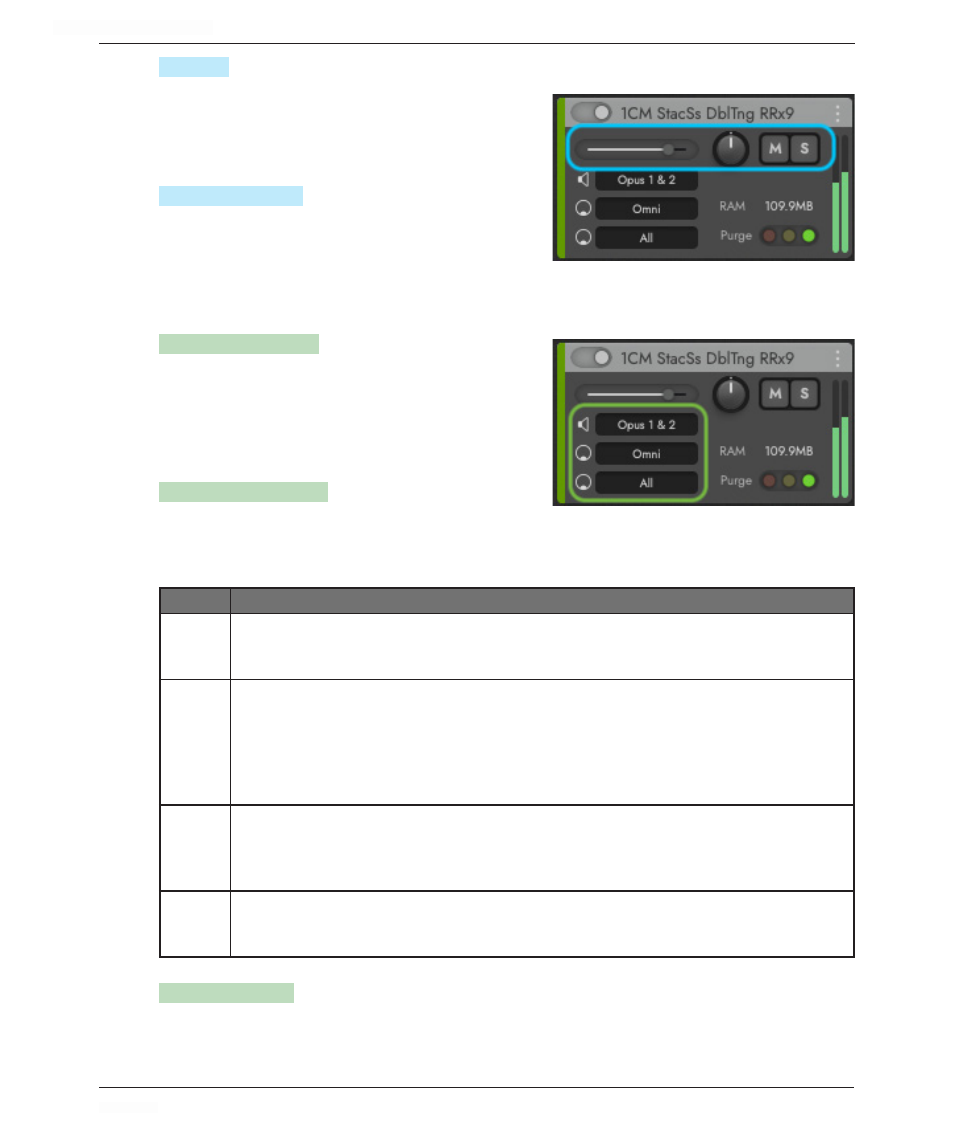EastWest Hollywood Orchestra Opus Edition Virtual Instrument Plug-In (Download) User Manual
Page 44

HOLLYWOOD ORCHESTRA OPUS EDITION
<
CHAPTER 2: GETTING STARTED
44
<
PAN
KNOB
controls the selected instrument’s pan. It’s the same control present in the
corresponding Master Instrument Channel’s
pan knob in the Play page, and the Mix Con-
sole’s pan slider in the Mix page, which will
both follow the knob movement.
SOLO / MUTE
BUTTONS
control the selected instru-
ment’s solo and mute functions. It’s the same
control present in the corresponding Master In-
strument Channel’s solo and mute buttons in
the Play page, and the Mix Console’s pan slider in the Mix page, which will both follow
the on / off state of the buttons simultaneously.
AUDIO OUTPUT
SELECTOR
controls the selected in-
strument’s audio output. It’s the same control
present in the corresponding Master Channel’s
output selection in the Play page, and the Mix
Console’s output selection the Mix page, which
will both conform to the selection made.
MIDI CHANNEL
SELECTOR
allows the selection of
various modes that control the way in which
incoming MIDI is received by the selected instrument. The various MIDI Channel modes
are described below.
MODE
DESCRIPTION
MULTI
This MIDI mode is useful for MIDI guitar controllers by allowing per-note control of Mod Wheel (CC1),
Expression (CC11) and Pitch Bend by sending those MIDI messages only to the voices on the same MIDI
channel as the controller event.
MPE
This MIDI mode stands for “Multi-Dimensional Polyphonic Expression” and is a MIDI standard developed by
the MIDI Manufacturer Association to accommodate a new class of MIDI controllers like the Roli Keyboard,
the Linnstrument, and the EigenHarp. In this mode, each note is sent to its own MIDI channel, cycling
through an allocated block of channels that enables MIDI messages (restricted to Note On, Note Off, Chan-
nel Pressure, Pitch Bend and CC74) to be sent per-note, while global MIDI messages like CC7 (Volume) and
CC64 (Sustain) are applied to all voices, regardless of the MIDI channel they were sent over.
OMNI
This MIDI mode sets an instrument to receive MIDI on all channels (1-16), with Mod Wheel (CC1), Expres-
sion (CC11) and Pitch Bend modulation applied to notes on all MIDI channels. This is useful when layering
sounds intended to be played together, like when stacking separate string sections together to create a
full string patch.
1-16
Set instruments to receive MIDI on discrete channels (1-16), with Mod Wheel (CC1), Expression (CC11) and
Pitch Bend modulation applied to notes on that specific MIDI channel. This is useful when using Opus as
a Multi-Timbral plugin, where individual control is needed.
MIDI PORT
SELECTOR
allows the selection of any active MIDI inputs that are enabled in the
Settings menu under the Audio and MIDI Setup window.
